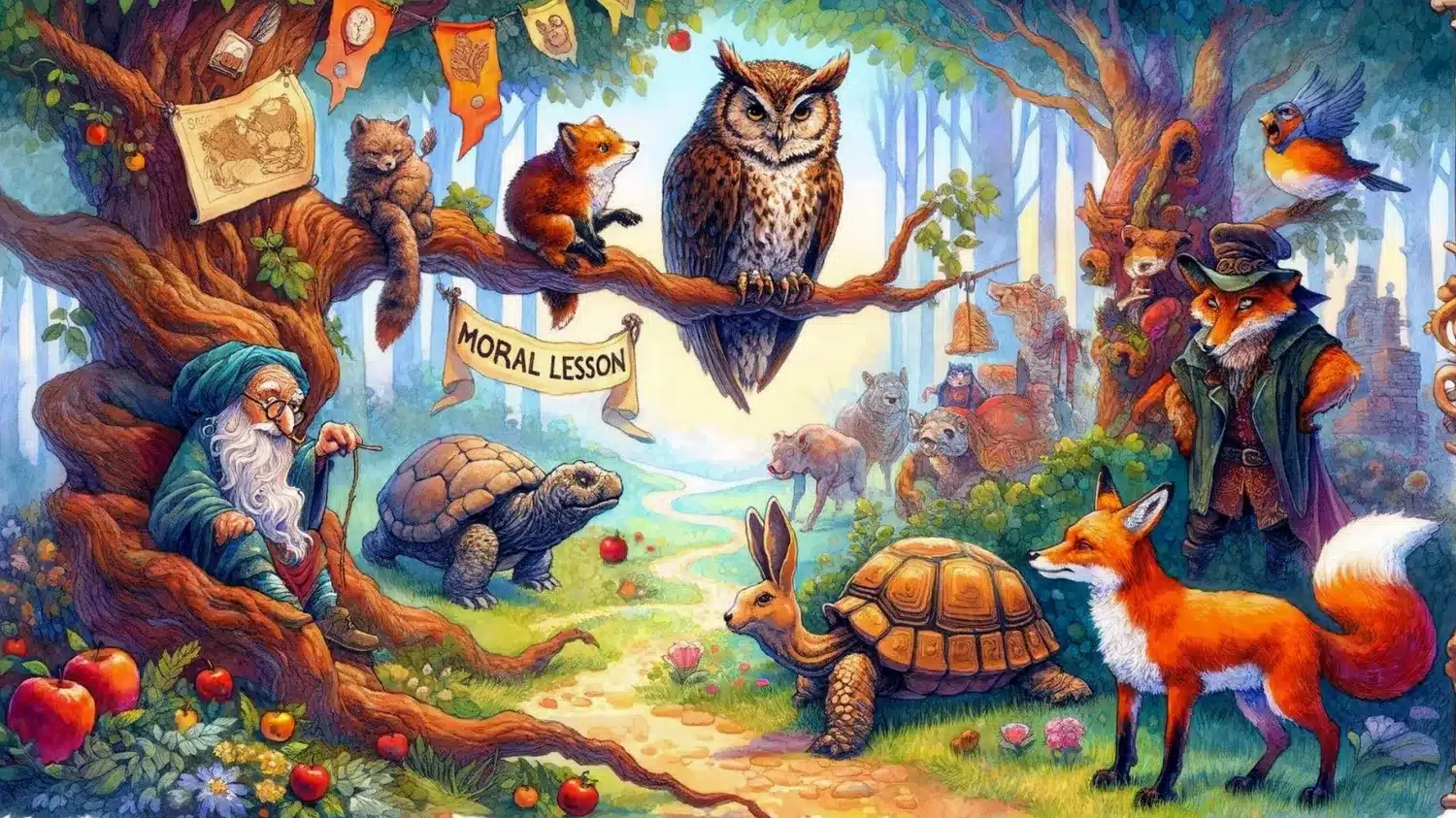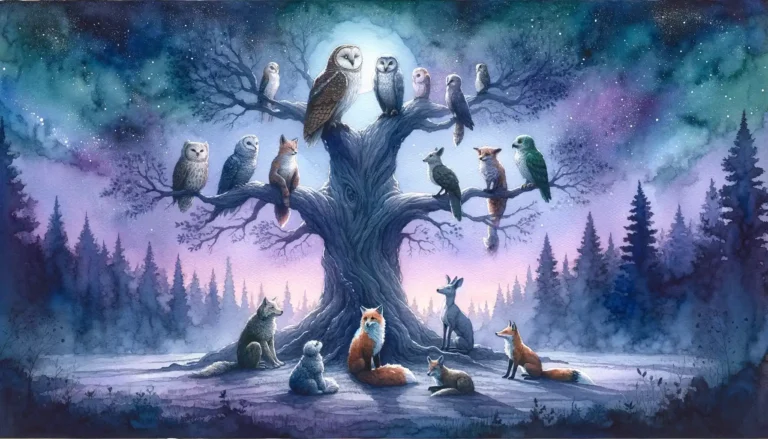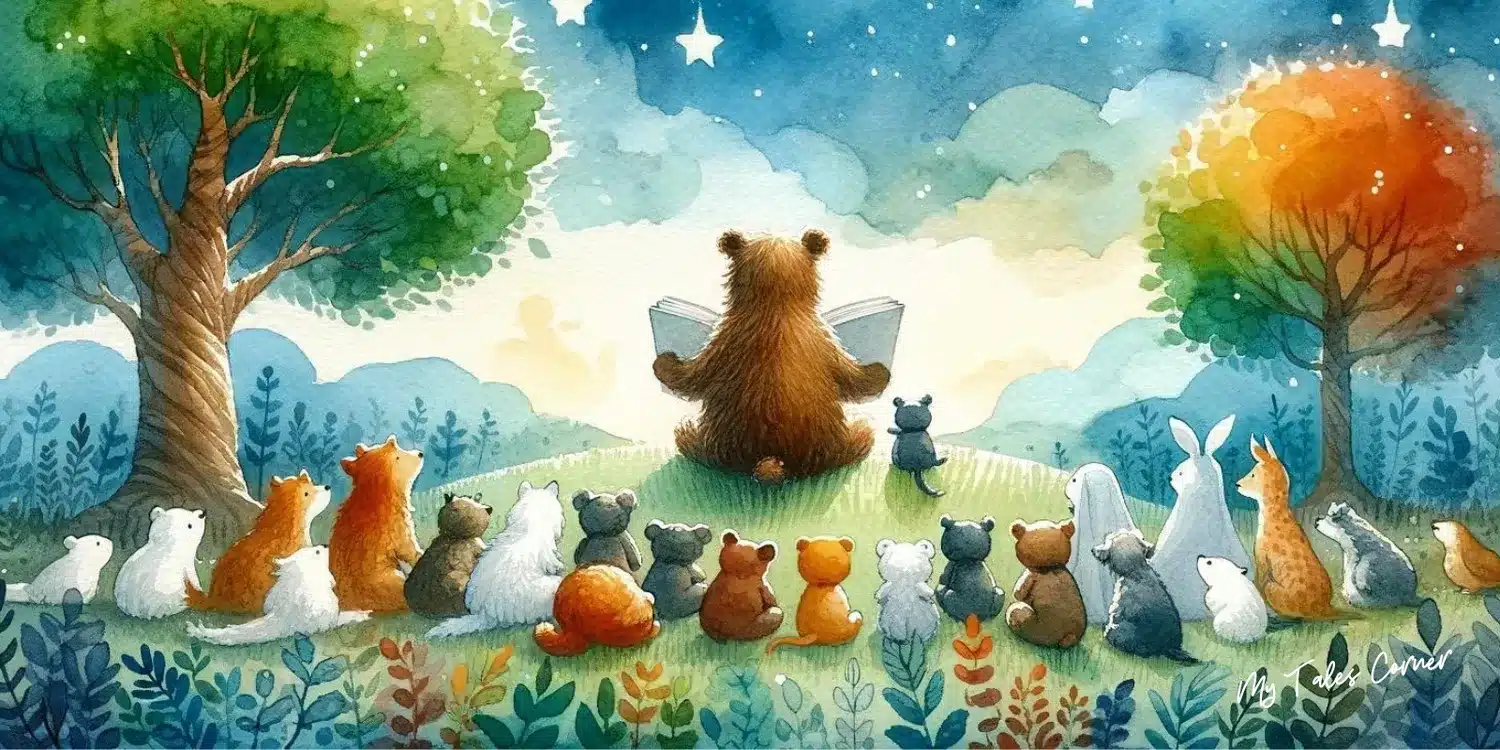Fables: Ignite Your Imagination and Learn Valuable Lessons with These Enchanting Stories
Delve into the enchanting world of «Fables,» where each story weaves together timeless lessons and moral dilemmas.
These short tales, rich in metaphors and allegorical content, have been passed down through generations, capturing the hearts and minds of readers and listeners alike.
Fables to read now
Benefits of Fables
Fables serve as a mirror to society, reflecting timeless truths through the actions of animals and mythical beings, making complex moral teachings accessible to all.
For Readers
Readers of fables are often drawn into a world where every character symbolizes a human trait, allowing for reflection on personal actions and societal norms.
This genre encourages critical thinking and the development of a moral compass.
Moreover, the brevity of fables makes them ideal for readers who wish to absorb a complete story and its lesson in a single sitting.
For Listeners
Listeners can enjoy the rhythmic cadence and vivid imagery that fables typically employ, enhancing their auditory and imaginative skills.
The stories often provoke discussion and can be a springboard for deeper philosophical conversations.
The lessons in fables, conveyed through the actions of their characters, remain in listeners’ minds long after the tales end, influencing their approach to life’s myriad challenges.
Tips for Enjoying Fables
Whether reading or listening to fables, a few tips can greatly enhance the experience.
For Readers
Approach fables with an open mind; look beyond the surface to uncover the layers of meaning within each tale.
Allow yourself to ponder the lessons, and how they apply to the modern world.
Consider keeping a journal to note thoughts and reflections on the fables you read, solidifying the morals and lessons they impart.
For Listeners
Create an environment conducive to listening—quiet, comfortable, and free from interruptions.
Engage actively by predicting outcomes or discussing the characters’ choices and what you might have done differently.
After listening, consider how the fable’s lesson might apply to your life or current events, making the story both personal and relevant.
Key Elements of These Stories
Fables are distinguished by several key elements that contribute to their unique charm and effectiveness.
Characteristics of Fables
Fables are succinct and often use animals as characters to illustrate human virtues and vices.
The plot is centered around a problem or situation that leads to a moral or practical lesson.
The language is simple yet evocative, with each fable culminating in a moral that succinctly encapsulates the story’s teaching.
Why Fables are Engaging
Fables draw in readers and listeners with their ability to turn everyday lessons into compelling narratives.
The use of animals and nature elements adds a universal appeal that transcends age and culture.
Their engagement lies in the ability to teach without preaching; the moral of the story is revealed through the consequences faced by the characters, rather than being explicitly stated by the narrator.
Create a Conducive Environment for Reading Fables
The environment in which fables are read or listened to can greatly influence the absorption of their lessons.
How to Read Fables
To read fables, find a peaceful space that allows you to focus on the tale without distractions.
A comfortable setting that encourages contemplation and discussion will enhance the experience, whether reading to oneself or to an audience.
Good lighting, a relaxed atmosphere, and perhaps the presence of nature can bring the spirit of fables into the room, making the reading experience all the more authentic and enjoyable.
In closing, «Fables» offer a treasury of wisdom packaged in short, poignant stories.
They remind us of the power of storytelling to instruct and delight, and they encourage us to continue seeking out new stories and the lessons they hold.
Embrace these age-old narratives and let them guide you through the tapestry of life’s moral landscape.
Abraham Storyteller (Abraham Cuentacuentos)
Read more now
This week’s recommended stories:
science fiction













